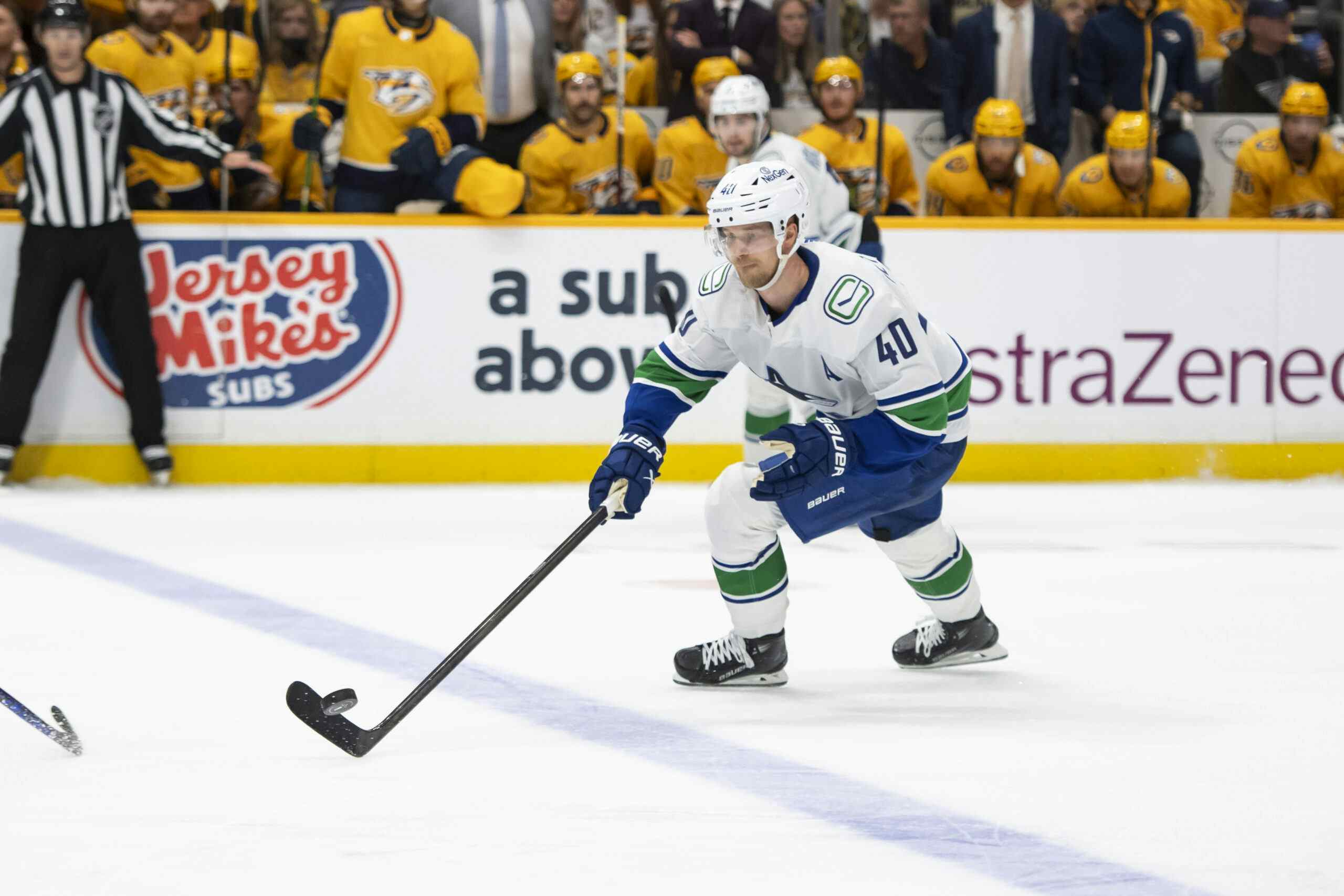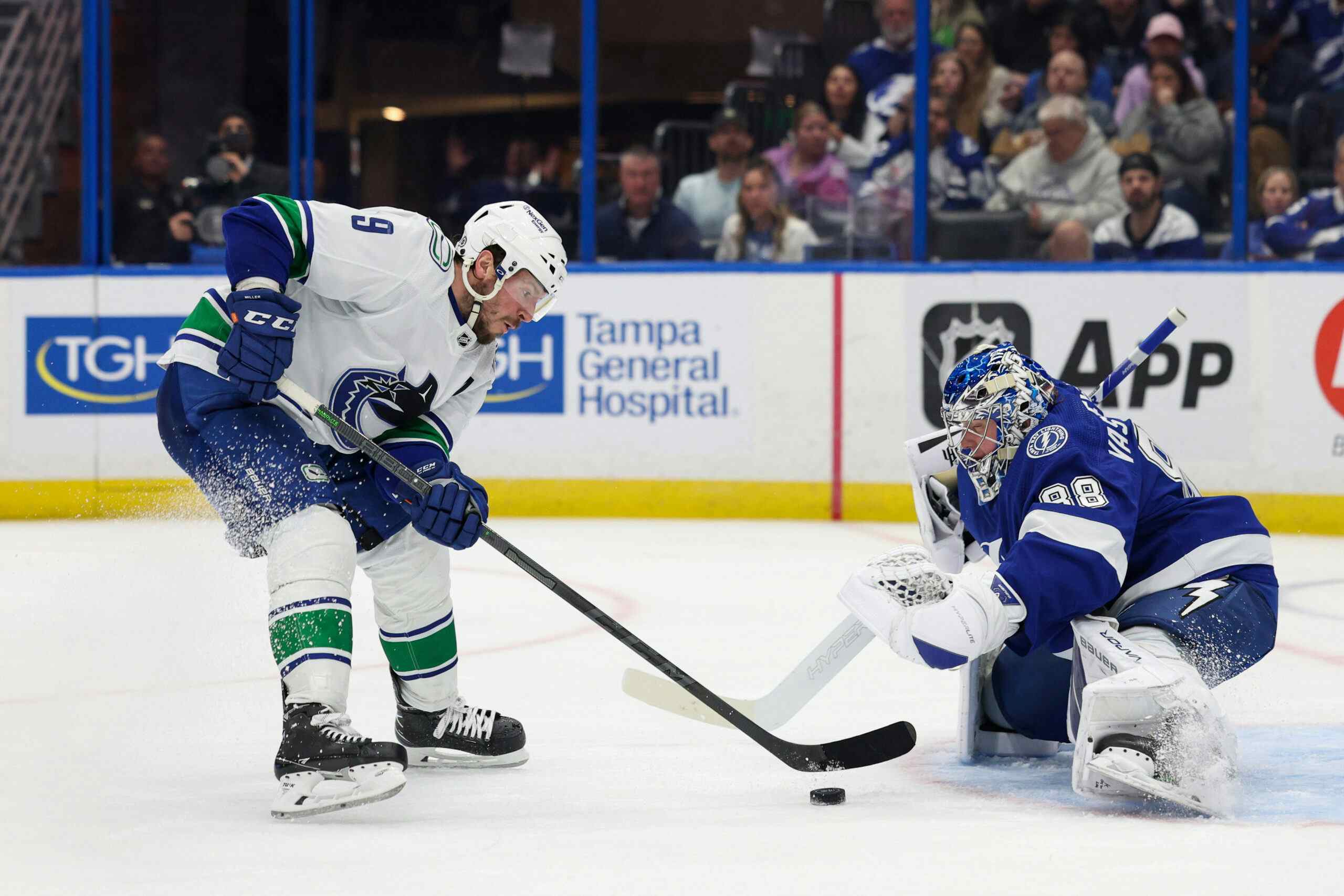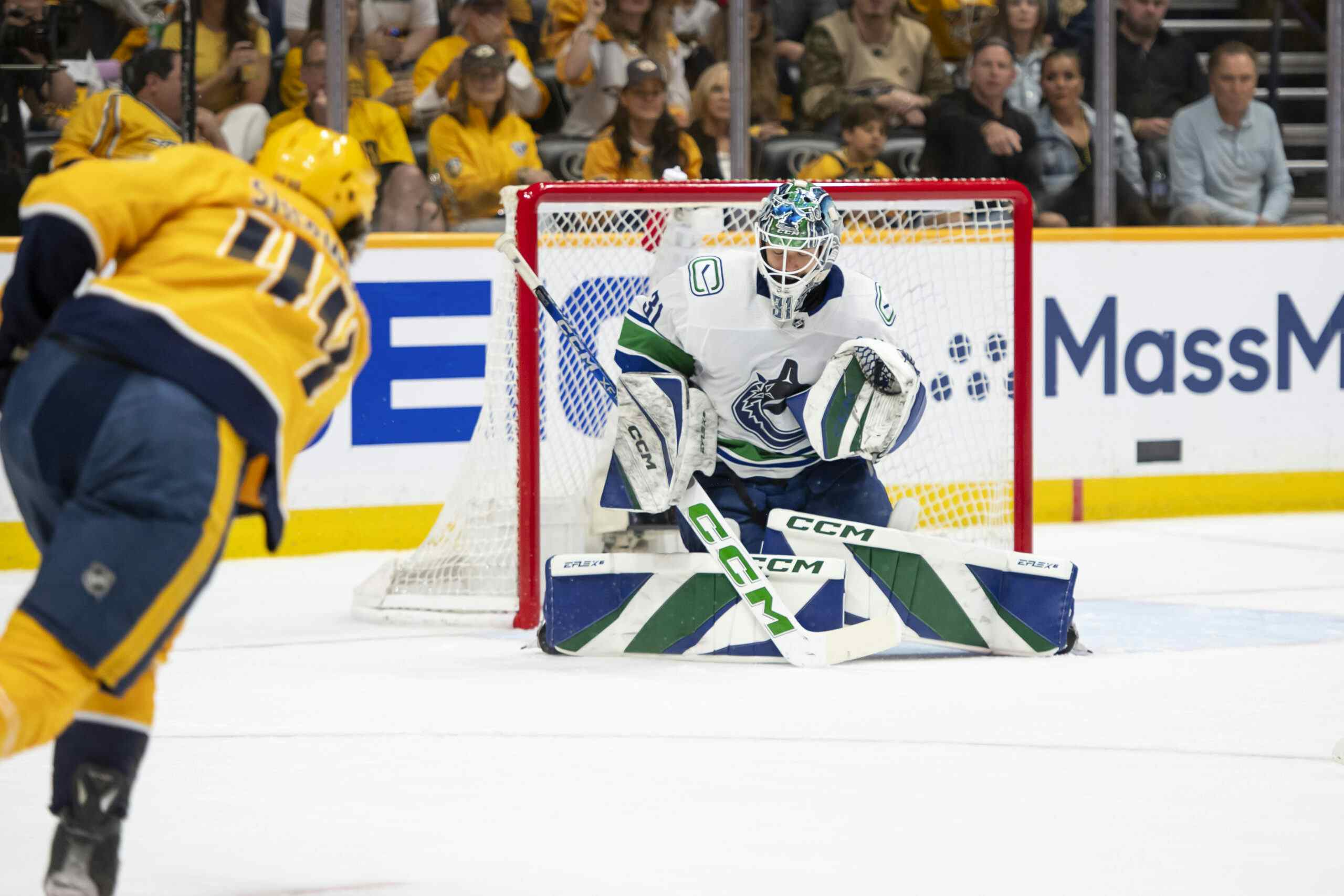How Travis Green Is Deploying His Forwards Differently This Year – And Why It’s Making All The Difference
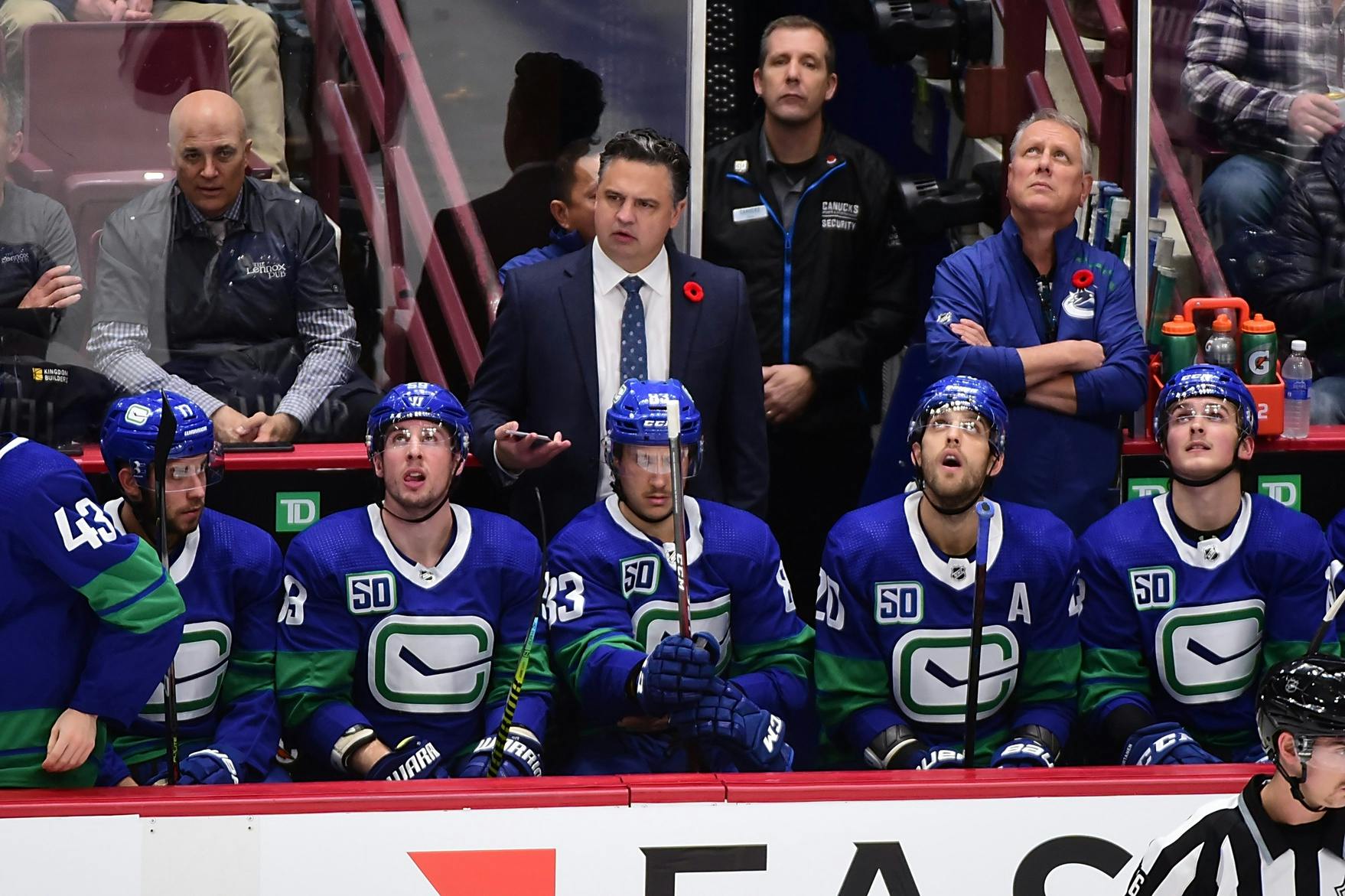
In 2019/20, the Vancouver Canucks have improved across the board – but nowhere is that more apparent than in their forward corps, which have vaunted the team to a Conference-leading goal differential and an average of more than 3.5 goals-per-game (as of this writing).
In many cases this early success is due to individual players taking steps forward – Elias Pettersson and Brock Boeser – or mounting major bouncebacks like Brandon Sutter. But when the improvement is so universal, at least some credit needs to be given to the head coach – and perhaps a fair deal more than that in the case of Travis Green.
The Canucks’ forward depth chart saw a couple important additions and some serious maturation over the 2019 offseason, but the biggest change seems to be how Green has been using his forwards – and the results speak for themselves thus far. Green is deploying his forwards in a very different fashion than he did in 2018/19 – taking a downright egalitarian approach to line-matching and zone starts that have made the Canucks much more difficult to handle, and even harder to beat.
Note: All stats were compiled prior to the Canucks’ November 6 game against St. Louis. Players have been ordered by average time-on-ice per 60 minutes for this season, ranked highest to lowest.
Zone Starts and Ice-Time
We’ll start with Zone Starts and Ice-Time, and for this one we’re going to take a look at each and every forward on the roster – and with good reason. Vancouver forwards have seen alterations in their deployment from the first line to the fourth – and that’s at least part of the reason that the majority are finding so much early-season success in 2019/20.
It should be noted that the Canucks’ rate of offensive-zone starts has gone up significantly in 2019/20 – a result of a stronger possession game – and so most forwards have received a bump as a result. With that being said, the numbers still present a stark contrast.
Bo Horvat
| Season | Team | Games | Avg. TOI/60 | O-Zone Starts% | D-Zone Starts % |
| 2018/19 | Vancouver | 82 | 20:49 | 40.9 | 59.1 |
| 2019/20 | Vancouver | 14 | 18:52 | 56.9 | 43.1 |
Horvat just picked up a boatload of new responsibilities as team captain, but his on-ice responsibilities have also been lessened. He’s being played in a much more offensive role than before, giving up some of his tough minutes to the other members of Vancouver’s deeper center ranks – and he’s responding with the best scoring start of his career.
Brock Boeser
| Season | Team | Games | Avg. TOI/60 | O-Zone Starts% | D-Zone Starts % |
| 2018/19 | Vancouver | 69 | 19:09 | 69.8 | 30.2 |
| 2019/20 | Vancouver | 14 | 18:42 | 45.1 | 54.9 |
Last year, Boeser and his linemate Elias Pettersson were downright sheltered – but no more. Boeser’s ice-time may be down – a result of better depth, no doubt – but he’s playing in a greater variety of situations, and is thriving. Like Pettersson, Boeser may be finding more opportunity for creativity with less-regimented zone starts.
JT Miller
| Season | Team | Games | Avg. TOI/60 | O-Zone Starts% | D-Zone Starts % |
| 2018/19 | Tampa Bay | 75 | 14:40 | 48.6 | 51.4 |
| 2019/20 | Vancouver | 14 | 18:40 | 41.2 | 58.8 |
Obviously, Travis Green had very little say in Miller’s minutes last season – but that doesn’t mean he hasn’t altered his role. Miller is being given more responsibility at both ends of the ice in Vancouver – and his statline is self-evident at this point.
Elias Pettersson
| Season | Team | Games | Avg. TOI/60 | O-Zone Starts% | D-Zone Starts % |
| 2018/19 | Vancouver | 71 | 18:14 | 70.5 | 29.5 |
| 2019/20 | Vancouver | 14 | 18:22 | 46.2 | 53.8 |
As a rookie, Pettersson was granted some rather generous zone starts – but those days are over. Pettersson is now starting more of his shifts in the d-zone than his opponent’s end – and somehow he’s still taken his production to another level. It sure seems as though Pettersson and Boeser are benefitting from less-structured deployment – and from getting away from the line-matching, as we’ll discuss in the next section.
Tanner Pearson
| Season | Team | Games | Avg. TOI/60 | O-Zone Starts% | D-Zone Starts % |
| 2018/19 | Vancouver | 19 | 16:28 | 41.9 | 58.1 |
| 2019/20 | Vancouver | 14 | 16:48 | 57.9 | 42.1 |
As goes Horvat, so goes Pearson – and so it should come as no surprise that the changes in Pearson’s deployment closely mirror his captain’s. Interestingly, Pearson is scoring less with more generous zone starts – but that’s likely a result of other factors, including the small sample size of his 2018/19 stint in Vancouver.
Brandon Sutter
| Season | Team | Games | Avg. TOI/60 | O-Zone Starts% | D-Zone Starts % |
| 2018/19 | Vancouver | 26 | 17:28 | 31.0 | 69.0 |
| 2019/20 | Vancouver | 14 | 15:23 | 54.8 | 45.2 |
Maybe Sutter was never meant to be a checking center, after all. Granted greater leniency on the ice and less of a defensive responsibility, Sutter has responded with his best scoring stint since being acquired by the Canucks – and he looks like a natural fit in the middle-six role.
Josh Leivo
| Season | Team | Games | Avg. TOI/60 | O-Zone Starts% | D-Zone Starts % |
| 2018/19 | Vancouver | 49 | 15:57 | 61.5 | 38.5 |
| 2019/20 | Vancouver | 14 | 14:55 | 64.7 | 35.3 |
Leivo is one of the few anomalies whose deployment has not changed. That’s probably an indication that Green recognizes both Leivo’s strengths and his shortcomings – and so he continues to put him in a position to succeed at maintaining possession in the offensive zone.
Tyler Motte
| Season | Team | Games | Avg. TOI/60 | O-Zone Starts% | D-Zone Starts % |
| 2018/19 | Vancouver | 74 | 12:46 | 33.2 | 66.8 |
| 2019/20 | Vancouver | 6 | 13:16 | 35.5 | 64.5 |
Motte hasn’t really played enough to make any definitive statements on his deployment, but thus far it looks to be in line with his 2018/19 role.
Jay Beagle
| Season | Team | Games | Avg. TOI/60 | O-Zone Starts% | D-Zone Starts % |
| 2018/19 | Vancouver | 57 | 13:39 | 18.5 | 81.5 |
| 2019/20 | Vancouver | 14 | 12:45 | 52.6 | 47.4 |
No player has seen their job change more than Beagle. Last year, he was used in an almost exclusively defensive role – much to the detriment of his advanced statline. Beagle being out against a variety of opponents is allowing him to be on the ice less overall, and that’s resulted in a better two-way quality of play than his dedicated shutdown gig.
Tim Schaller
| Season | Team | Games | Avg. TOI/60 | O-Zone Starts% | D-Zone Starts % |
| 2018/19 | Vancouver | 47 | 10:40 | 37.6 | 62.4 |
| 2019/20 | Vancouver | 14 | 12:14 | 51.4 | 48.6 |
Schaller’s change in deployment is both a reflection of linemate Beagle’s altered role and Schaller’s overall increase in offensive competence – making it no longer necessary for Green to hide him in the lineup.
Adam Gaudette
| Season | Team | Games | Avg. TOI/60 | O-Zone Starts% | D-Zone Starts % |
| 2018/19 | Vancouver | 56 | 10:57 | 59.4 | 40.6 |
| 2019/20 | Vancouver | 5 | 12:06 | 62.2 | 37.8 |
Gaudette is still the freshest forward on the team, and he’s still being sheltered on the ice to a certain extent. With that being said, he hasn’t played enough to make any definitive statements on the matter.
Loui Eriksson
| Season | Team | Games | Avg. TOI/60 | O-Zone Starts% | D-Zone Starts % |
| 2018/19 | Vancouver | 81 | 14:04 | 38.0 | 62.0 |
| 2019/20 | Vancouver | 5 | 11:20 | 57.7 | 42.3 |
Even Loui is getting more starts in the offensive zone – though he’s as of yet been unable to take advantage of them. His lower average ice-time is probably a sign that the organization has given up hope of eventually dealing him.
Jake Virtanen
| Season | Team | Games | Avg. TOI/60 | O-Zone Starts% | D-Zone Starts % |
| 2018/19 | Vancouver | 70 | 14:49 | 45.4 | 54.6 |
| 2019/20 | Vancouver | 14 | 11:18 | 64.8 | 35.2 |
Virtanen is a tough one to nail down, because his role has changed dramatically throughout the team’s first month of action. Overall, it looks as though Green has finally accepted that Virtanen will never be a two-way threat – and has taken to placing him in more offensive situations to allow #ShotgunJake to thrive.
Micheal Ferland
| Season | Team | Games | Avg. TOI/60 | O-Zone Starts% | D-Zone Starts % |
| 2018/19 | Carolina | 71 | 14:06 | 54.9 | 45.1 |
| 2019/20 | Vancouver | 12 | 10:21 | 46.2 | 53.8 |
Ferland hasn’t quite been at 100% yet in his time with Vancouver, and so we’ll avoid much commentary on his deployment thus far.
Quality of Competition
When looking at the Canuck forwards’ Quality of Competition, one sees a very similar picture to the deployment numbers – coach Travis Green is spreading out the responsibility, getting away from line-matching, and allowing each of his forwards to play in a greater variety of situations.
In order to avoid graphical overload – and citing too much of Micah Blake McCurdy’s fine work – we won’t be pulling up QoC charts for each and every Canuck attacker – but we will take a look at each of the centers so that we can see how Green is matching each line.

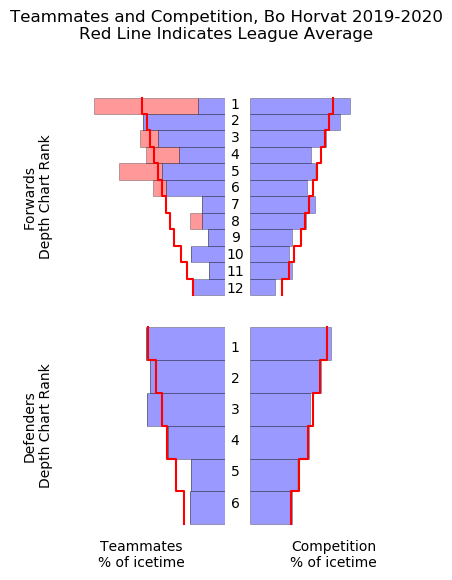
From HockeyViz.com
Bo Horvat is still spending a lot of time matched up against the opponents’ best players – and rightfully so. He’s not doing that exclusively in 2019/20, however, and that has meant more time against a lower quality of competition – and the captain has responded with nigh-point-per-game play.
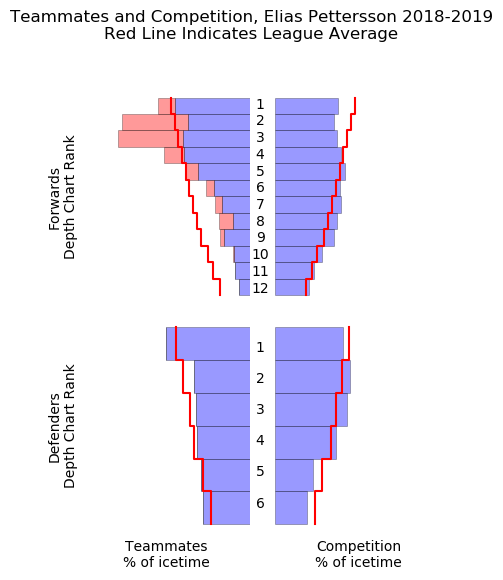

From HockeyViz.com
Some of Horvat’s tough minutes have gone to Elias Pettersson – who is both drawing tough defensive matchups and spending more time against the best the opposition has to offer. He’s responded by boosting his production to superhuman levels – and looks to be building up a reputation as an elite two-way center in the mould of Pavel Datsyuk.
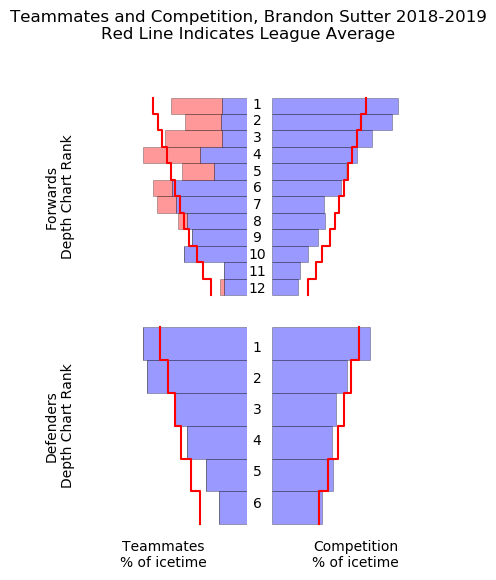

From HockeyViz.com
Sutter was used in an almost exclusively shutdown role when healthy in 2018/19 – with a good chunk of that time coming during Jay Beagle’s extended absence. This time around, he’s playing more minutes against players of his own calibre – and loving it.
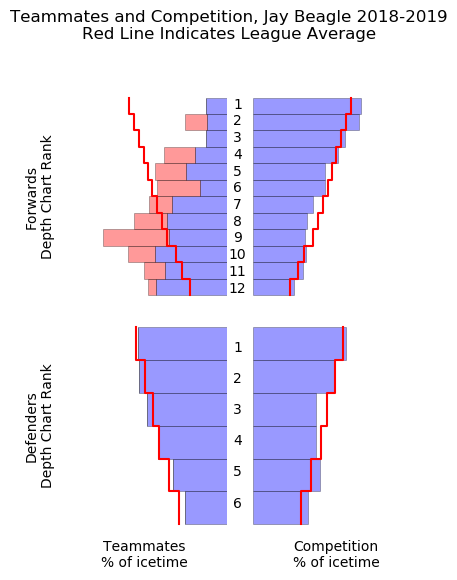
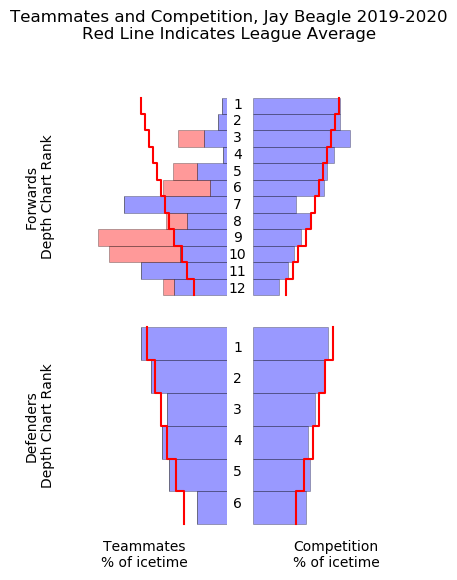
From HockeyViz.com
Last season, Beagle spent too many minutes against top-flight competition – and it led to him being exposed at times. This season, his deployment is a lot closer to the league-average – which has put his strong positional play on display.
What Does It All Mean?
We already used the word “egalitarian” once, and it’s an appropriate one, because Travis Green is allowing each of his forward lines a more even-handed share of offensive opportunities and defensive responsibilities in 2019/20.
Last season, Green relied too heavily on set roles and dedicated line-matching – and it was to the team’s detriment. Jay Beagle is a capable defensive player overall, but he’s not built to spend a lot of time on the ice against the fastest, strongest, and most talented players on the opposing team – nor should he be expected to be.
The best teams in the NHL are those that can use their top lines against their opponents’ top lines. For one, it allows the elite scorers on the roster to escape the matchup game and the go-to checkers of the league – offering instead more head-to-head time against their fellow stars.
It also makes for a stronger transition game. To wit, if Jay Beagle makes a good defensive play in his own end and gains possession of the puck, there’s only a slim chance that he’ll then manage to take that puck up the ice and convert it into a scoring opportunity. If it’s Elias Pettersson making that steal, however, it’s another story altogether.
Lastly, there’s the factors of creativity and spontaneity. Players can get bogged down by constant line-matches and dedicated roles, but the egalitarian approach allows them a significantly better opportunity to try something new. The Canucks are bursting at the seams with youthful vigor and creative talent – and so it makes sense that they’d benefit greatly from allowing their players a greater variety of situations in which to show it. Travis Green appears to be leaning into that.
As far as the first month and change of the 2019/20 season is concerned – so far, so good.
Recent articles from Stephan Roget

